Tatami Room: The Heart Of Japan’s Contemporary Home
A Well Preserved Tradition Kept Alive In Modern Dwellings
Originally a luxury that only the wealthy could afford, tatami space remains its exclusivity in the present time. But instead of the value in money, it is now treasured for its tradition and adaptability worth.
The tatami room, better known as 和室 (washitsu, “Japanese-style room”), is a space that features tatami mats as its main flooring element. Tatami mats are made from woven straw with a rice straw core and have been a staple in Japanese homes for centuries. They are typically about 90 cm by 180 cm in size, although the dimensions can vary by region (sizes listed below).
Japanese-style spaces and tatami are closely attached, as thick as thieves. Even today, tatami mats are widely used in houses, ryokan (traditional inns), onsen (hot spring baths), and even restaurants and cafes. The tatami room is also still present in many housing buildings in Japan, regardless of how modernly chic the houses are. While the room strongly boosts the space’s Japanese heritage essence, its great functionality and usage adaptability ensure its relevance in current dwellings.
Tatami History
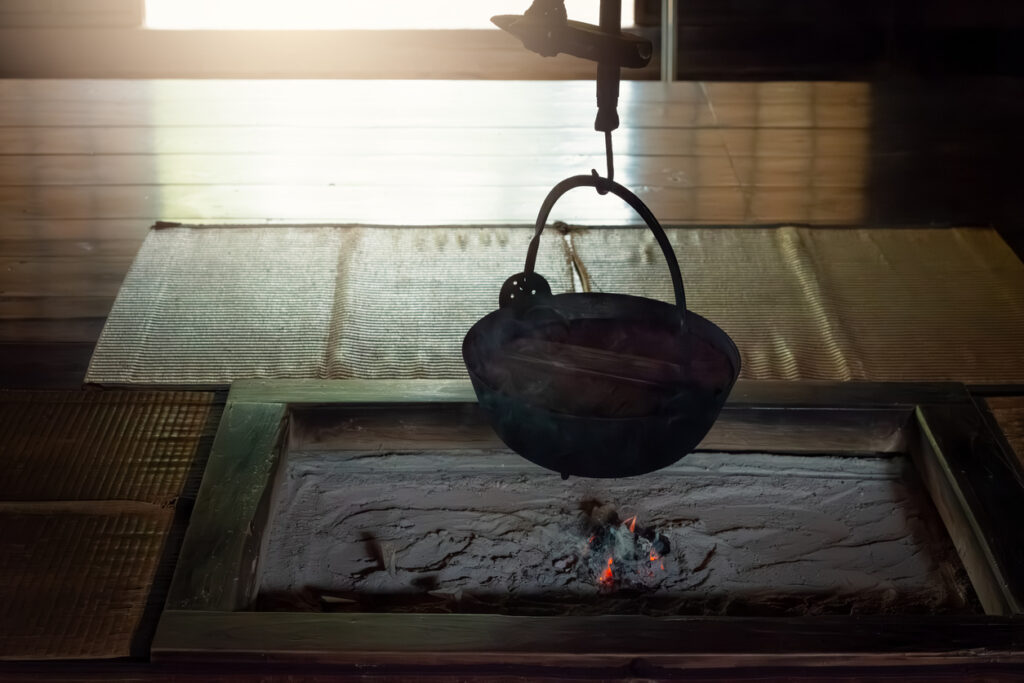 © Photo by iStock: blew_i
© Photo by iStock: blew_iThe Japanese word tatami traces its origin back to the verb 畳む (tatamu; to fold). This comes from the simple fact that when not in use, the mats were often folded or stacked. Originally woven from rice straw, tatami were thin mats that people sat or slept on for comfort. They were designed to offer a cushion against the hard wooden or dirt floors of early Japanese homes.
During the Muromachi Period (1336–1573), the tatami room was mainly used by the elite as a study or meditation room. Over time, it gradually became more common among the general population, expanding into living and sleeping areas. By the Edo Period (1603–1868), washitsu had become a quintessential part of Japanese home design.
Tatami mats have evolved in modern times. While traditional mats were relatively thin at first, modern tatami is much thicker. It resembles more of a panel rather than the lightweight mats of the past. They are still made from straw at their core, but many are now layered with denser materials, such as compressed wood or foam, to provide more durability and insulation.
Washitsu Breakdown
The contemporary era has seen the washitsu retain its rich heritage value. Many Japanese occupants use it today as a multi-purpose room that can quickly and easily be repurposed to suit, well, just about anything. From a specifically purposed space—such as a bedroom or living room—to a more flexible area, namely a family room or activity room, there is an endless possibility for the space.
Tatami & Space
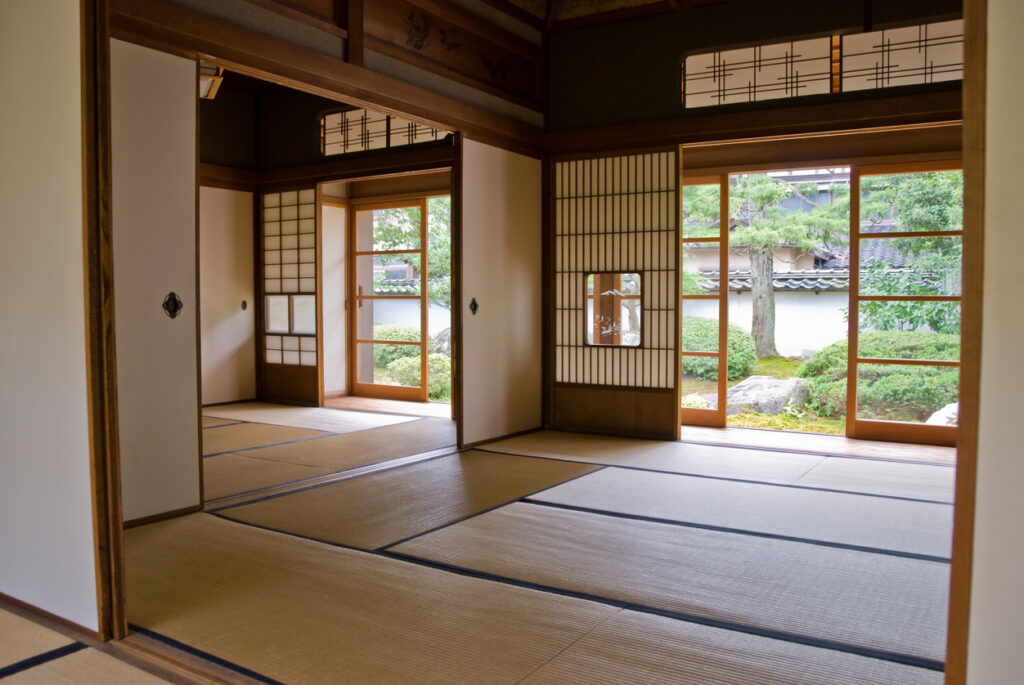 © Photo by iStock: jpskenn
© Photo by iStock: jpskennTatami mats are so essential to Japanese houses that the size of rooms in Japan is commonly measured by the number of mats that would fit in them, whether it’s a washitsu or not. This system helps people visualize space in a very practical way—how many tatami mats would cover the floor?
For instance, a room might be described as 六畳 (roku-jō), which literally means “six tatami mats.” If you were to measure it out, the floor would have enough space to fit six tatami mats. A typical living room in Japan is often about 八畳 (hachi-jō; “eight tatami mats.”) This is about 4.5 by 3.6 meters (roughly 15 by 12 feet) in size. Once you get used to these sizes, you, too, will be able to describe space without needing to pull out a ruler!
Tatami Sizes by Region
- Kanto Region (Tokyo area), Hokkaido Region, Shikoku Region: 90 x 180 cm (standard)
- Kansai Region (Osaka, Kyoto, Kobe area): 91 x 182 cm (slightly bigger)
- Kyushu Region (Fukuoka, Kagoshima area): 88 cm x 176 cm (slightly smaller)
- Chugoku Region (Hiroshima, Okayama area): 90 x 180 cm or 91 x 182 cm (mixed)
Furniture
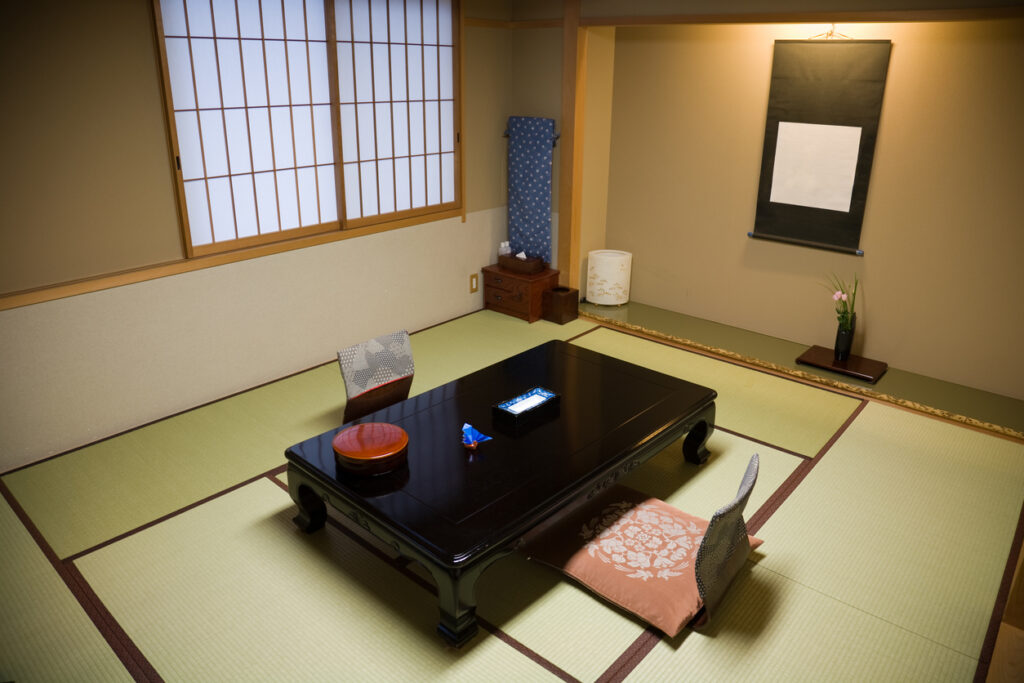 © Photo by iStock: Alatom
© Photo by iStock: AlatomThe use of tatami as flooring in a washitsu also determines the kind of furniture Japanese people use. In general, people often find themselves getting comfortable with light, portable and minimal fixtures around their dwellings. Although more people are incorporating Western-like furniture in their spaces, especially with the growing popularity of trends like the Japandi interior style, some pieces of equipment are simply irreplaceable.
Here are some staple items in any Japanese house for the tatami room:
- Zabuton (座布団; “flat floor cushions used when sitting or kneeling”)
- Chabudai (ちゃぶ台; “low dining or tea table”)
- Zaisu (座椅子; “low Japanese chairs with a backrest but no legs”)
- Kotatsu (炬燵; “tables with a heater underneath and a quilt around the sides to retain the heat”)
- Futon (布団; “a thin firm mattress that can be folded up”)
These products all have convenient portability. So, when they are not in use, the tatami room can always be freed up for any function transformation.
Sliding Doors: Fusuma
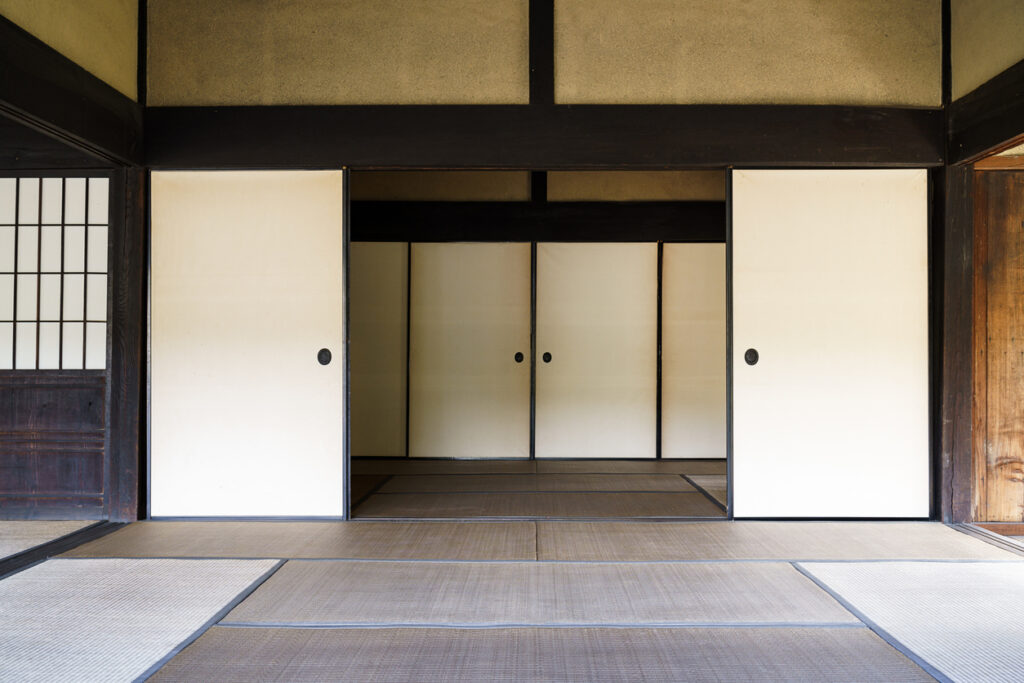 © Photo by iStock: Wako Megumi
© Photo by iStock: Wako Megumi襖 (fusuma) are vertical rectangular door panels that can be slid from side to side. They are typically used between adjoining rooms, acting as large removable walls. This allows for one space to be closed or opened up as needed. As Japanese homes tend to have a limited footprint, the adaptability of an area to be redefined will be fully cherished by any occupant.
Paper Partitions/Windows: Shouji
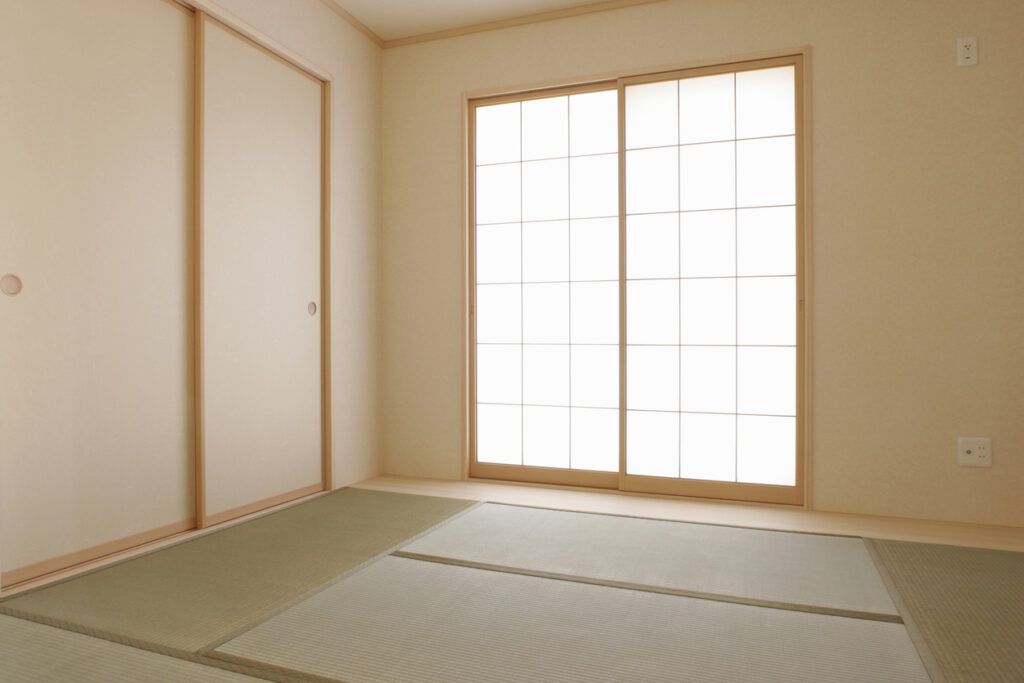 © Photo by iStock: gyro
© Photo by iStock: gyroAnother type of partition, more commonly used as a window screen, is called 障子 (shouji). Shouji is made up of wooden lattices covered in translucent washi (Japanese paper). It provides a degree of privacy but also allows soft natural light to flow into the room.
The other hidden advantage of installing a shouji in a room is that it reduces the cold. Although thin, the layer of paper on this fixture can block cool air from passing through. Specifically, in colder areas, the use of this element can be pretty prominent. Above and beyond, who can resist the rich traditional Japanese ambiance this partition brings into space?
Built-in Closet: Oshiire
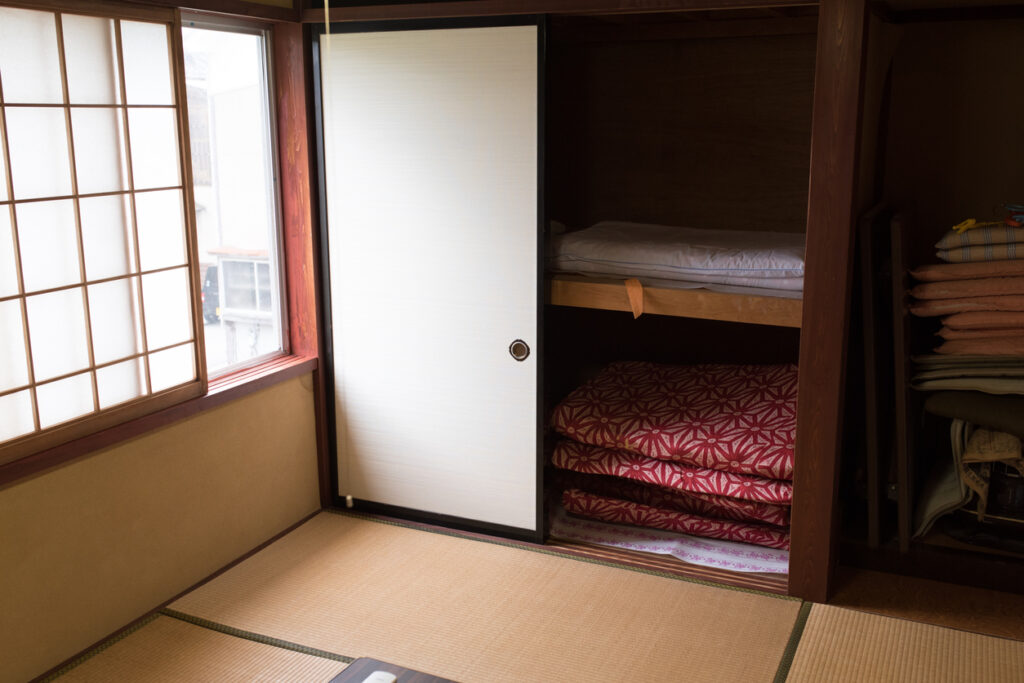 © Photo by iStock: miura-makoto
© Photo by iStock: miura-makoto押入れ (oshiire) is a small closet section used for storage in the tatami room. Most Japanese people, who commonly sleep on the floor, often take advantage of the closet to store bedding materials such as futons, pillows, blankets and sheets. While the number of locals utilizing Western-style beds is scaling up in modern days, the function of oshiire cannot be taken for granted. Much more than just for storing items, this integrated structure concurrently enables the room to be used for other purposes and frees the room from any portable furniture when necessary.
While the washitsu is a culmination and distillation of several hundred years of Japanese architecture and culture, it will never stop evolving. Whatever space function it serves, a tatami room will remain a part of Japanese homes for a long while to come.
Do you want to live in a house with a tatami room? Check Room Finder for your new tatami home.
If you already have a tatami room in your house, how do you utilize it?












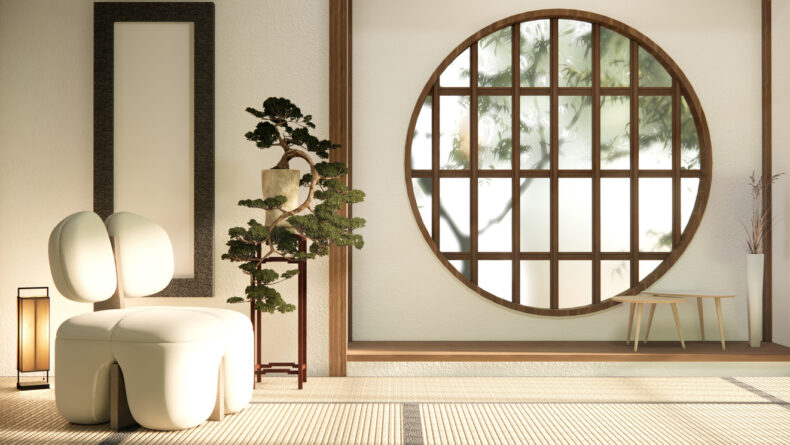
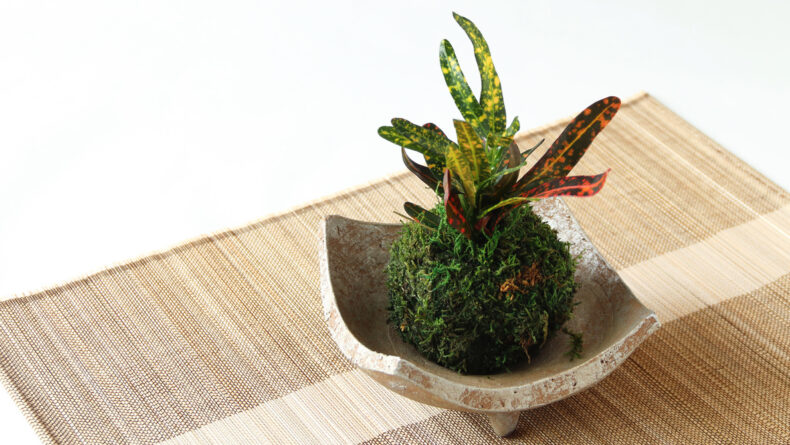


Today, Japan’s best tatami matting (the woven outermost layer) is produced in Kyushu. While the majority of mass-produced tatami mats use straw grown/woven in China. The smell of newly made tatami is wonderful.